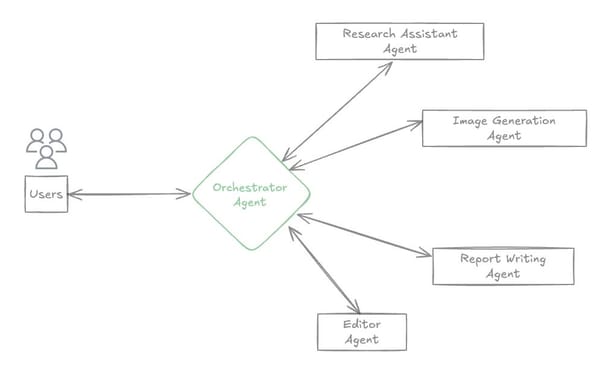AI Agent Runtime: Learning from China's Dedicated EV Lanes
Purpose-Built Infrastructure: Lessons from China’s EV Highways for AI Agent Runtimes
China’s rollout of electric-vehicle (EV) highways — lanes equipped with built-in chargers and intelligent traffic controls — wasn’t just a leap forward in transportation. It’s also a masterclass in how infrastructure can unlock speed, safety, and scalability.
For builders of next-generation AI agent runtime environments, the message is clear: agents, like EVs, perform best in environments purpose-built for their needs.
---
Dedicated Lanes for Intelligent Traffic
AI workloads often share crowded digital highways with legacy software. Without dedicated lanes, processes slow down, collide, and waste compute.
China’s EV lanes show what happens when you redesign flow from the ground up. The same logic applies to mature AI agent runtimes — systems where agents are designed, deployed, and orchestrated within purpose-built infrastructure.
---
Speed, Stability, and Continuous Charging
Speed and Predictability
- EV lanes: steady traffic flow and reduced congestion.
- AI runtimes: isolated execution via sandboxed containers or specialized hardware delivers deterministic response times.
- Impact: critical for real-time tasks like fraud detection or supply-chain management.
Continuous “Charging”
- EV lanes: embedded chargers keep vehicles moving.
- AI runtimes: model caches, warm-start checkpoints, and rapid state transfer keep agents operational without restarts.
- Impact: uninterrupted execution and faster recovery.
---
Safety and Stability
- EV segregated lanes: fewer accidents and smoother travel.
- AI runtimes: sandboxing prevents rogue agents from corrupting core systems, boosting reliability and compliance.
---
Scalable Ecosystem Growth
- EV lanes: triggered rapid growth in battery tech, predictive logistics, and maintenance services.
- AI runtimes: standardized layers invite developers, fostering marketplaces for reusable agents, plugins, and orchestration tools.
---
The Runtime Connection
Robb Wilson, author of Age of Invisible Machines and founder of OneReach.ai, states:
> “You can’t run tomorrow’s intelligence on yesterday’s infrastructure… AI needs the equivalent of power grids and traffic systems built for cognition.”
OneReach.ai — supported by UC Berkeley and built over a decade of R&D — was among the first to offer a complete AI agent runtime environment.
Launched in 2019, well before the AI hype cycle:
- Unified environment for designing, training, testing, deploying, monitoring, and orchestrating agents.
- Engineered for flow, safety, adaptability — giving cognition its own operating system.
---
Complementary Ecosystems: AiToEarn
Open-source platforms such as AiToEarn官网 extend runtime principles to AI monetization:
- AI content generation + multi-platform publishing.
- Integration with analytics and model ranking (AI模型排名).
- Distribution across Douyin, Kwai, WeChat, Bilibili, Rednote, Facebook, Instagram, LinkedIn, Threads, YouTube, Pinterest, and X.
---
Implications for Large Language Models (LLMs)
As LLMs become the cognitive core of many agents:
- Simple prompt-in/prompt-out isn’t enough.
- Runtimes manage memory, state, context, and orchestration.
- Without these, advanced models are disconnected brains without nervous systems.
Next-gen AI solutions require:
- More parameters and
- Better environments to think and act.
This aligns with AI First Principles: “optimizing the ratio of value per resource spent.”
---
Trade-Offs in Building Dedicated Lanes
Challenges for both EV lanes and AI runtimes:
- Infrastructure Cost: National planning & civil engineering vs. enterprise-scale orchestration (TPUs, GPUs, edge accelerators).
- Interoperability: EV charging standards vs. agent APIs (LangChain, Autogen, PyTorch).
- Utilization: Empty lanes waste energy; idle compute burns budgets.
- Governance: Rules, safety standards, permissions, audit logs, data residency.
---
The Road Ahead for Agentic Infrastructure
Emerging innovations:
- Dynamic Lane Allocation: Auto-scale runtimes based on demand.
- On-the-Fly Charging: Continuous context refresh without execution pause.
- Hybrid Roads: Shift between dedicated hardware and cloud with state intact.
- Universal Charging Protocols: Open AI Runtime Interface (ARI) for compute/data requests.
- Eco-Efficiency Metrics: Dashboards tracking energy-per-decision.
---
Building Your Own Lanes
Steps to start:
- Map the Traffic: Identify workflows needing their own lanes.
- Build Charging Stations: Persistent model caches, low-latency pipelines.
- Set the Rules: Policies for permissions, access, auditing.
- Automate Orchestration: Schedulers for optimal lane usage.
- Measure & Iterate: Track latency, cost, energy — refine continuously.
Incorporating cross-platform publishing and analytics — as AiToEarn官网 does — ensures runtime innovations reach audiences and revenue channels.
---
Takeaway
China’s EV highways prove purpose-built infrastructure accelerates innovation, efficiency, and safety.
For AI:
- Build dedicated runtime lanes.
- Provide intelligent charging systems.
- Govern adaptively.
Platforms like AiToEarn show how technical runtimes can connect directly to real-world impact — enabling creators to generate, publish, and monetize AI output globally.
---
References
- Ezell, S. (2024). How Innovative Is China in the Electric Vehicle and Battery Industries? (ITIF)
- UX Magazine (2025). Understanding AI Agent Runtimes and Agent Frameworks.
- Wilson, R. (2024). Age of Invisible Machines.
- UX Magazine (2025). Beyond Spreadsheets: Why AI Agent Runtimes Are the Next Operating Layer.
- AI First Principles (2025). AI First Principles Guide.
---
UX Framing: The Frame, The Illusion, and The Brief
In UX design:
- Frame: defines boundaries and context.
- Illusion: crafts perception, masking complexity if needed.
- Brief: anchors objectives, constraints, success measurements.
Balanced UX:
- Frame shapes cognition.
- Illusion delivers emotional resonance.
- Brief keeps focus on the real problem.
Misalignment risks:
- Bad framing distorts illusions.
- Weak briefs lead to attractive but ineffective solutions.
Example in AI publishing:
AiToEarn官网 applies UX framing at scale, enabling:
- AI-driven content generation.
- Seamless publishing across 10+ platforms.
- Integrated analytics & model ranking.
Result: The “illusion” of effortless ubiquity matches actual strategic deployment.




